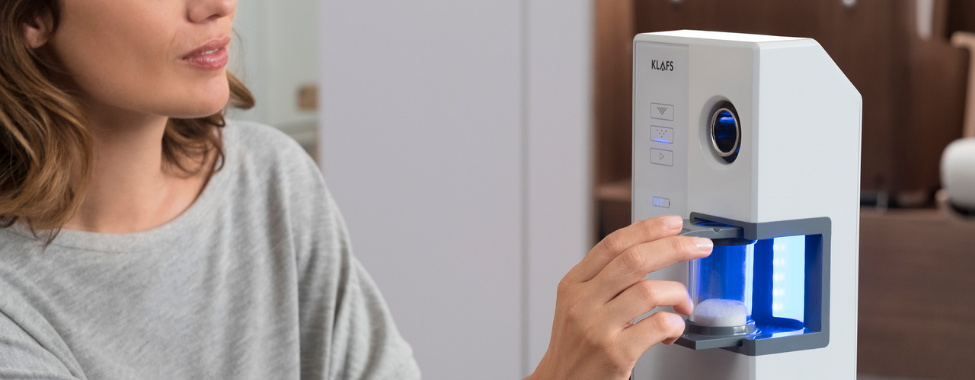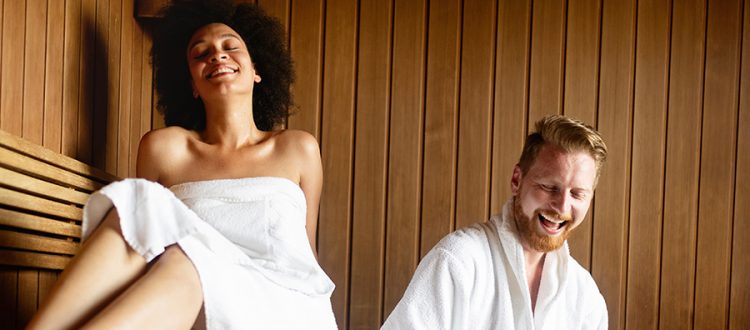Heat shock proteins, or HSPs, are created with the use of heat therapies and can help your body experience improved health, performance, and recovery. Luckily, increasing HSP production through thermotherapy is easy to do – as easy as relaxing in an infrared sauna or layering on some clothes. Learn more about the function of HSPs and ways to incorporate heat therapy into your life.

What are Heat Shock Proteins?
For anyone unfamiliar with molecular biology, heat shock proteins (HSPs) may seem a little ‘out there. In reality, however, these ‘molecular chaperones’ (as they have been nicknamed), play an enticing role in maintaining our physical, emotional, and mental health.
What HSPs Are
HSPs are within the family of macromolecular structures, despite their tiny size. They were discovered in the early 1960s and have since opened the doors in the field of genetics and have helped the scientific and medical communities view our genetic mapping in a new light. The family of heat shock proteins was initially characterized as a highly conserved battery of genes whose expression could be induced by heat shock. HSPs provide an opportunity for each organism to ‘up-regulate’ gene expression.
There are many different classifications of HSPs, all of which are classified by their molecular weight and their specific intracellular functions. Classifications are divided into five major families, with HSP90, HSP70, HSP60, and HSP100 being the most studied. While there are many classifications, they are all referred to as ‘molecular chaperones’, because they serve to restabilize, reorganize, and rejuvenate intercellular order.

What HSPs Do
HSPs play an essential role in maintaining the efficacy of any system or system of organisms. An increase in HSPs within human physiology has been demonstrated to aid in the prevention of serious neurological conditions, as well as other chronic autoimmune disorders. HSPs are created when organisms are subjected to fluctuations of temperatures extreme enough to move beyond habituated temperature.
When thermal stress (higher or lower temperatures than what the given species is normally habituated to) is placed on organisms, something quite extraordinary happens: All of these observed organic structures begin to produce, something medical clinicians and scientists have called heat shock proteins. When HSPs are created in response to thermal stress in the external environment, they produce great benefits to the intercellular atmosphere within both small and large organisms.
Heat Shock Protein Benefits
Increasing the production of heat shock proteins (HSPs) generates a ton of positive effects on a biological level for anyone. They may prevent disease-causing mutations, repair damaged and misfolded proteins, and also help release more natural growth hormones. In other words, HSPs help your body benefit from conditions that otherwise could be lethal if presented at a higher dosage. Some heat shock protein benefits include:
- Reparation of misfolded and damaged proteins
- Increased immune response
- Reduction of free radicals
- Faster muscle recovery and repair
- Heart protection
- Higher insulin production

Types of Heat Therapy for HSP Production
Infrared Sauna Use
Infrared heat therapy penetrates deeper into the body than direct contact application. This heat is capable of reaching below the surface of the skin through near infrared heat, to the body’s soft tissue through mid infrared, and finally into fat cells through far infrared wavelengths. Using an infrared sauna is a great way to incorporate infrared heat into your health regimen for HSP production, as the temperature inside an infrared sauna is adjustable and averages a comfortable 100°F to 130°F – which allows you to tolerate a longer heat therapy session for more therapeutic benefit.
Exercise
Any type of exercise where you find yourself feeling warmer or sweatier than at your rested state will kickstart the natural release of heat shock proteins. Most studies have recorded results from cardio on the body. However, studies have shown drastic changes in two types of heat shock proteins after performing eccentric contractions to create enough damage to the muscle tissue. This suggests you might get more release of these proteins hitting the squat rack rather than choosing the treadmill.
Layering Up
To get the most bang for your buck in terms of HSPs release, try layering up more than usual during your next session to help reduce any cooling of your body during resting periods. A 2017 study in the Journal of Sports Science suggests that while subjects tested showed somewhat of an increase in HSP release on an arm crank ergometer, elevating core body temperature produces a higher HSP release. So, if you’re looking for the slightest edge in muscle growth and improved recovery, take advantage of this easy adjustment the next time you try to increase HSP production.
Hot Baths
While the degree of what you’ll get from a hot bath (or shower) might not be the same as what you’d get from a sauna, you may be able to give your body a similar response in terms of heat shock protein release. Subjects from a 2017 study proved just that – after being immersed up to their waistline in 40°C water for 1 hour, they saw a spike of HSP from 23% to 39%. The 16% variance was largely due to differences in total body mass and body fat percentage (leaner individuals saw a bigger increase than the others).
HSP production is an easy thing to stimulate for added health benefits in your daily life. While you might not see immediate or drastic results, incorporating heat therapy into your routine can help your body have a healthier foundation for lasting health. Before exposing yourself to heat for extended periods of time, be sure to speak to your doctor and take all safety precautions. And always remember to hydrate after sweating it out!
 Canada
Canada Australia
Australia New Zealand
New Zealand Malaysia
Malaysia China
China



























